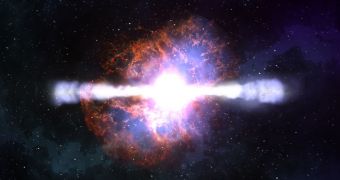Astronomers were recently able to identify what they consider to be the most likely formation mechanism for dramatic cosmic events known as Type Ia supernovae. The finding goes a long way towards clearing the mystery associated with these objects.
Past studies had suggested that these events occur when a white dwarf star in a binary system accreted too much mass from its companion, thus becoming unstable. When a certain threshold was reached, a massive thermonuclear reaction ensued, that helped the white dwarf shed the extra mass.
But recent observations of the galaxy Messier 31 (M31 or Andromeda) show that another possible trigger for Type Ia supernova events may be the complete merger of two white dwarfs.
According to investigators, such an event would produce a supernova about 40 times brighter than possible by the thermonuclear explosion of a single white dwarf in a binary star system.
Careful analysis of five other massive elliptical galaxies have determined that this correlation appears to hold. Understanding this particular type of event is important because Type Ia supernovae are used as standard cosmic candles.
This means that they are used as reference points by astronomers when calculating cosmic distances, such as the one between the Milky Way and Andromeda or some other, distant galaxy.
Measurements of the remnants left behind by the massive explosions have also been used to demonstrate that the Universe is expanding at an accelerated rate, and this forms the basis of the dark energy theory. Without expansion, there is no need for this energy to exist.
Interestingly, studies conducted on white dwarfs and the supernova events they produce have demonstrated that they may constitute the reason why we cannot find life elsewhere in the Universe.
Given the intensity and strength of these events, they release massive amounts of energy and radiation throughout their surroundings. These high-energy particles may contribute to annihilating developed or primary lifeforms, therefore halting evolution in its tracks.
Calculations conducted by NASA Goddard Space Flight Center (GSFC) expert Dr. Richard Mushotzky show that as much as 30 supernovae occur in the observable Universe each second.
There are roughly 100 billion galaxies in the Cosmos, all of which formed in the past 10 billion years. Taking into account that the rate of supernova formation is one per galaxy per century, the result is 1 billion supernova events per year in the Universe.
Of these, only a small proportion are Type Ia events, but they nonetheless help further astronomy and astrophysics. Therefore, understanding how and why they occur is critical to science, Daily Galaxy reports.

 14 DAY TRIAL //
14 DAY TRIAL //